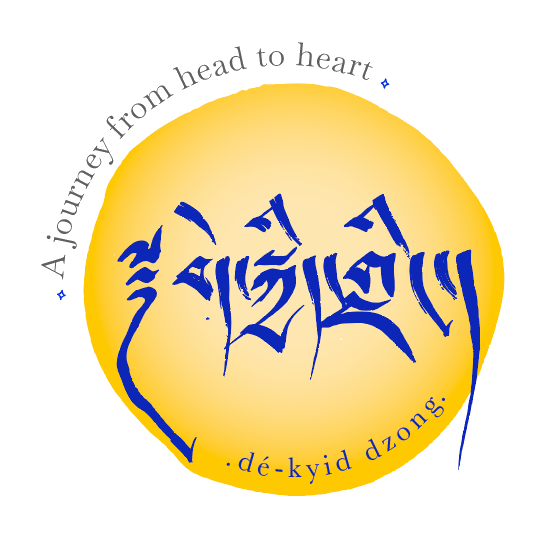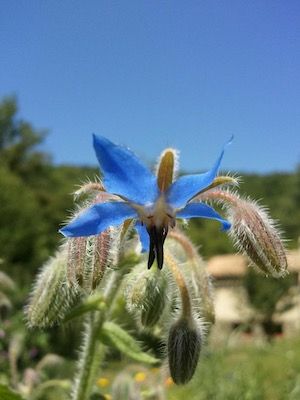Borage
I- Nomenclature
Latin name: Borago officinalis
Family : Borraginaceae
Common names: Common borage, Cooltankard, Tailwort
Etymology
Latin "borrago" borrowed from Arabic "abu rach" or "abuaraq": "father of sweat".
II- Legends and traditions
The ancients said it was suitable for warding off melancholy. Already in the Middle Ages, the Great Albert called it "a generator of good blood".
In Italy, in the XVIth century, Matthiole recommended it against the failures of the heart, to refresh the feverish.
A popular legend tells us that you have to carry fresh borage flowers with you, so that we can face the risks of life victoriously. Borage could say: "I relieve the heart, I give birth to gaiety".
III- Botanical description
Description: Borage has a hollow, hairy and highly branched stem, which can reach 50 to 80 cm in height.
Its leaves are quite large, oval and dark green in color. Like the stem, they are covered with rough, prickly hairs.
The flowers are blue, rarely white or pink, and always star shaped. They bloom from May to September.
Fruits are tetracene, that is, they are made up of four parts.
Habitat: Native to Syria, borage has spread all over the Mediterranean, especially North Africa and Spain. It appreciates rich soils and grows most often on the edge of woods, in wasteland.
Parts used : flowers and seeds
IV- Active ingredients
|
Leaves/Flower |
Seed |
|
• Essential fatty acids, including cis-linoleic and γ-linoleic acids. |
V- Therapeutic uses
Properties
|
Flower |
Seed |
|
|
Indications
Leaves
Tonic for the adrenal gland or to counteract the prolonged effects of steroid therapy
Bronchitis, cough
To stimulate lactation
Flowers & seeds
Regenerating power on the skin and restores suppleness, elasticity and tone to dry, devitalized and tired skin
Rheumatism, nervous heart problems, fluid retention, edema
Externally for eczema
Dosage
Leaves
Infusion: To be taken in the first stages of infections of the lungs or colds accompanied by fever. Mothers can combine it with fennel to stimulate milk production.
Tincture: Take 10 ml three times a day as a stress tonic or following a course of steroids.
Juice: Mash fresh leaves and drink 10ml of the juice, 3 times a day, to treat depression, grief after death, or for anxiety.
Lotion: Dilute the juice in an equal amount of water and use for irritated, dry skin or for redness of nerve origin.
Seeds
Capsule: Take 500 mg of the oil in capsule daily as a supplement to help with eczema or rheumatoid arthritis.
Oil: can also help in some cases of irregular periods, for irritable bowel syndrome.
Flowers
Infusion: 2 pinches of flowers for a liter of water. Infuse 10min, drink 3 cups / day.
Syrup: take a syrup made from flower infusion as an expectorant, can be combined with mullein or marshmallow.
VI- Precaution of use
Contraindication
The aerial parts contain pyrrolizidine alkaloids, hepatotoxic and carcinogenic substances: people with liver problems and pregnant women should avoid taking the flowering tops.
Unwanted effects
The aerial parts can cause constipation, while the oil can cause loose stools, bloating and belching.
Interactions
In case of anticoagulant treatment or against epilepsy, it is recommended to consult a doctor before using borage oil.



